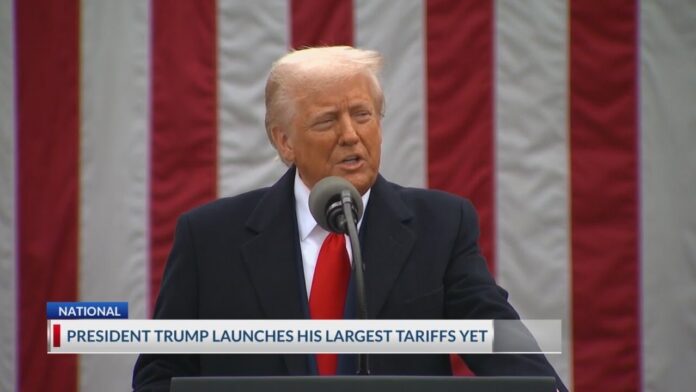Navigating the New Tariff Landscape: What It Means for Global Trade
In a bold move that has sent ripples through the global economy, President Trump has announced sweeping new tariffs affecting nearly every trading partner worldwide. This historic escalation in trade policy is being touted as a declaration of economic independence, but what does it really mean for businesses and consumers alike?
Understanding the New Tariffs
The new tariffs impose a minimum 10% tax on all trading partners, with the exception of Canada and Mexico, who already face higher tariffs. This move targets a wide range of imports, from clothing and computers to TVs and toys. Notably, China is now facing a staggering 34% tariff on its goods, in addition to a 20% tariff already in place. The European Union is also hit with a 20% import tax on all products.
Key Points: – 10% Minimum Tariff: Applies to all trading partners except Canada and Mexico. – 34% Tariff on China: On top of existing tariffs, significantly impacting Chinese imports. – 20% EU Import Tax: Affects all products from the European Union. – 25% Tariff on Vehicles: Now in effect for imported vehicles.
The Impact on Consumers and Businesses
The immediate effect of these tariffs is likely to be felt by consumers, who may see higher prices on everyday goods. Retailers like Shein and Temu, known for their affordable products, could face increased costs that are passed on to shoppers. Additionally, the end of exceptions for taxes on cheaper goods mailed into the U.S. could further drive up prices.
Economic Implications: – Higher Consumer Costs: Prices on imported goods are expected to rise. – Retail Impact: Companies like Shein and Temu may adjust pricing strategies. – Job Market: The administration claims tariffs will bring jobs back to American soil, but economists warn of potential job losses in industries reliant on imports.
Global Reactions and Potential Retaliation
Despite the U.S. Treasury Secretary’s urging for other countries to refrain from retaliating, both China and the European Union have signaled possible countermeasures. This could lead to a tit-for-tat escalation, further straining international relations and impacting global trade.
Possible Outcomes: – Trade Wars: Potential for increased tensions and retaliatory tariffs. – Diplomatic Strain: Strained relations with key trading partners. – Market Volatility: Uncertainty could lead to fluctuations in global markets.
What Lies Ahead?
As the world watches these developments unfold, businesses and consumers must brace for potential changes in the economic landscape. While the administration hopes to boost domestic manufacturing and job creation, the broader implications of these tariffs remain uncertain. Stakeholders across industries will need to adapt to this new reality, balancing the challenges and opportunities that arise.
In this evolving scenario, staying informed and agile will be crucial for navigating the complexities of global trade in the coming months.


